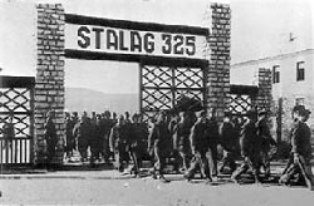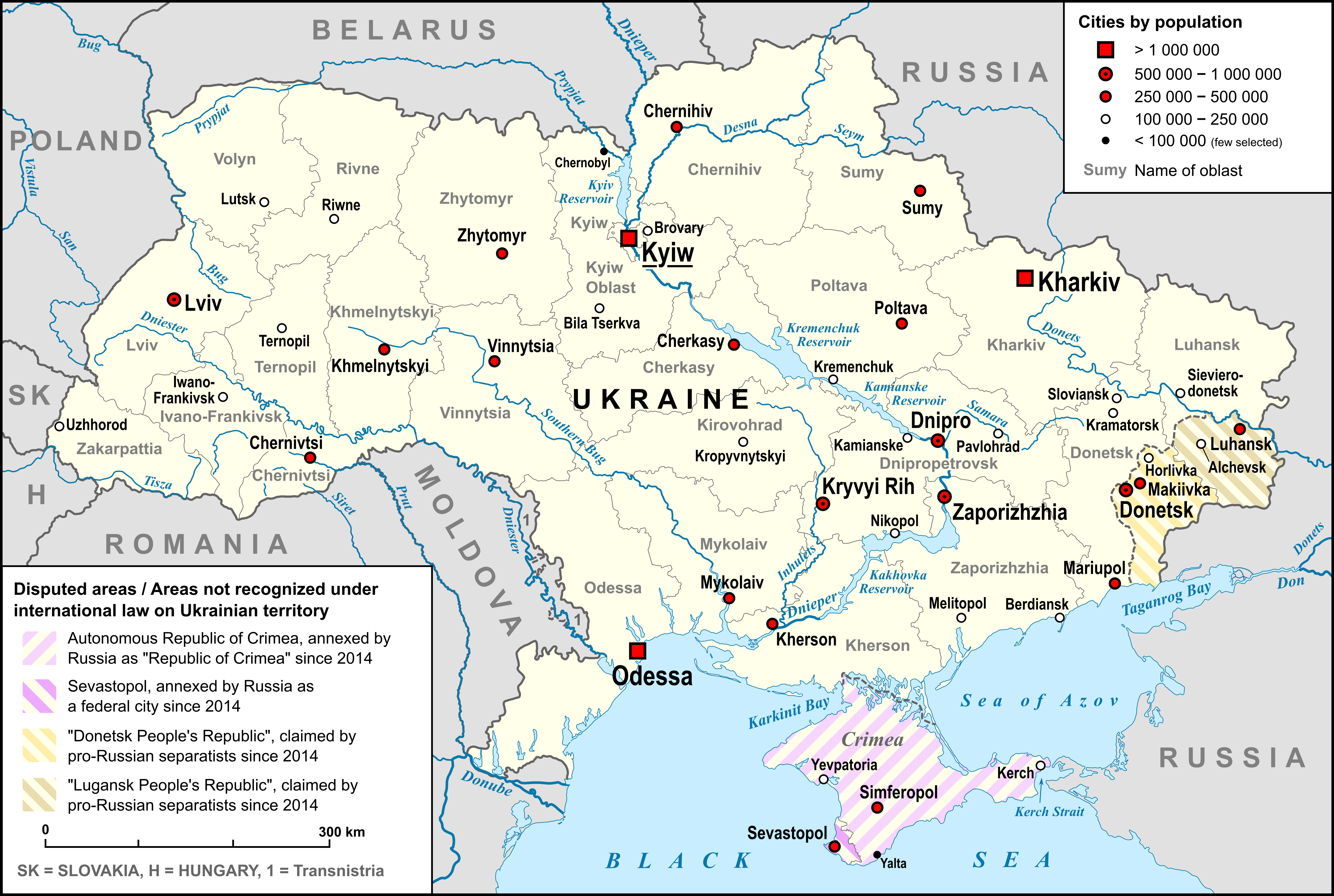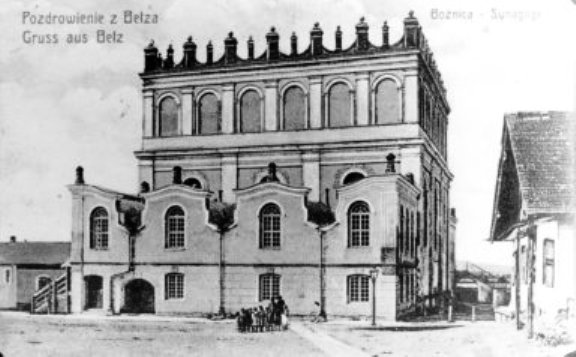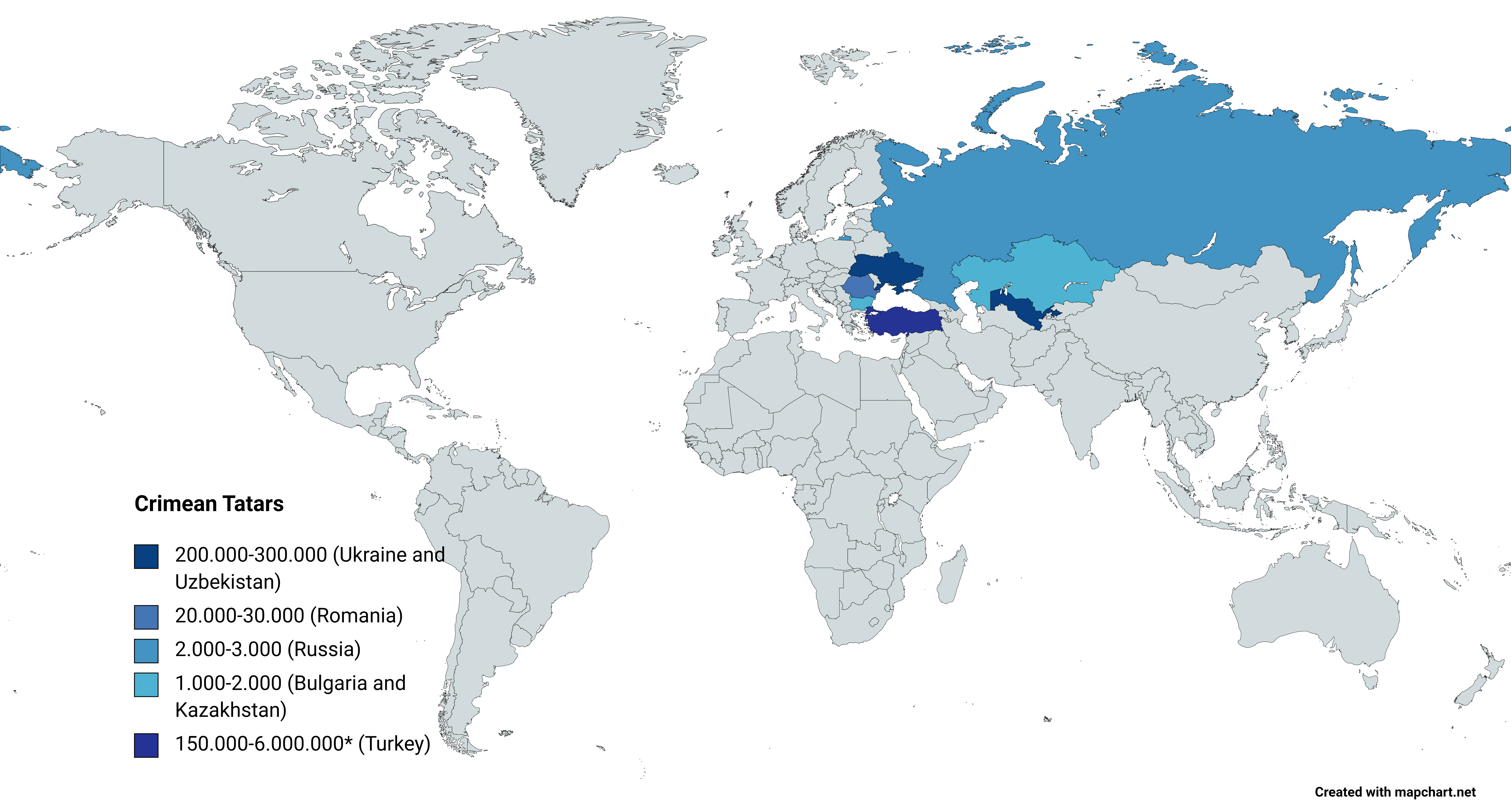|
Rava-Ruska
Rava-Ruska (, ; ; ) is a city in Lviv Raion, Lviv Oblast, western Ukraine. It is a border town between Ukraine and Poland. The Rava-Ruska (border checkpoint), border checkpoint is situated west of the city, along the international autoroute Warsaw–Lviv. Rava-Ruska hosts the administration of Rava-Ruska urban hromada, one of the hromadas of Ukraine. Its population is approximately History Rawa-Ruska was founded in 1455 by the Polish prince Władysław I of Płock, Duke of Bełz and Mazovia. He added the suffix "Ruska", meaning "Ruthenian" (during this time, the urban Ukrainian inhabitants were referred to as "Ruthenians"), to distinguish it from Rawa Mazowiecka located further west. Due to a convenient location along the merchant trail from Lublin to Lviv, the newly located town quickly developed. For centuries, Rawa was part of the Crown of the Kingdom of Poland, Kingdom of Poland and the Polish–Lithuanian Commonwealth. It remained in private hands of several consecutive s ... [...More Info...] [...Related Items...] OR: [Wikipedia] [Google] [Baidu] |
Rava-Ruska Urban Hromada
Rava-Ruska urban hromada () is a hromada in Ukraine, in Lviv Raion of Lviv Oblast. The administrative center is the city of Rava-Ruska. Settlements The hromada consists of 1 city (Rava-Ruska Rava-Ruska (, ; ; ) is a city in Lviv Raion, Lviv Oblast, western Ukraine. It is a border town between Ukraine and Poland. The Rava-Ruska (border checkpoint), border checkpoint is situated west of the city, along the international autoroute Warsa ...) and 45 villages: References {{Lviv Oblast 2020 establishments in Ukraine Hromadas of Lviv Oblast ... [...More Info...] [...Related Items...] OR: [Wikipedia] [Google] [Baidu] |
Rava-Ruska (border Checkpoint)
Rava-Ruska is a land border crossing between Ukraine and Poland on the Ukrainian side, near the city of Rava-Ruska, Lviv Raion, Lviv Oblast. The crossing is situated on autoroute () Warsaw - Lviv. Across the border on the Polish side is the village of Hrebenne, Tomaszów Lubelski County, Lublin Voivodeship. The border crossing is located west of the city of Rava-Ruska. In the city at a rail station is rail border checkpoint that however serves freight trains only. The type of crossing is automobile and lorries but not pedestrians however they are planning to build a crossing for pedestrians in the future The port of entry is part of the Rava-Ruska customs post of Lviv customs. See also * Poland–Ukraine border * State Border of Ukraine The state border of Ukraine (; abbreviated as DerzhKordon) is the internationally recognized boundary of Ukraine, encompassing its land, maritime territory, and airspace. The border is jointly secured by the State Border Guard Service of ... [...More Info...] [...Related Items...] OR: [Wikipedia] [Google] [Baidu] |
Lviv Raion
Lviv Raion () is a raion (district) of Lviv Oblast, Ukraine. It was created on 18 July 2020 as part of the reform of administrative divisions of Ukraine. The center of the raion is the city of Lviv. Four abolished raions, Horodok, Peremyshliany, Pustomyty, and Zhovkva Raions, as well as Lviv Municipality and parts of Kamianka-Buzka and Zolochiv Raions, were merged into Lviv Raion. Population: Subdivisions At the time of establishment, the raion consisted of 23 hromadas: * Bibrka urban hromada with the administration in the city of Bibrka, transferred from Peremyshliany Raion; * Davydiv rural hromada with the administration in the selo of Davydiv, transferred from Pustomyty Raion; * Dobrosyn-Maheriv settlement hromada with the administration in the urban-type settlement of Maheriv, transferred from Zhovkva Raion; * Hlyniany urban hromada with the administration in the city of Hlyniany, transferred from Zolochiv Raion; * Horodok urban hromada with the administration ... [...More Info...] [...Related Items...] OR: [Wikipedia] [Google] [Baidu] |
Rawa Mazowiecka
Rawa Mazowiecka is a town in central Poland, with 16,090 inhabitants (2022). It lies in the Łódź Voivodeship and is the capital of the Rawa County. From 1562 the city hosted the ''Rawa Treasury'' for the Military of the Polish–Lithuanian Commonwealth, Polish army. During an excavation in 1948, a hoard wealth deposit dating from 600 BC was found containing 4 underground rooms with barrels of gold and silver. A smaller treasure was found containing mainly bronze artefacts from the Trzciniec culture, dating from around 1700 BC. History Rawa has a long and rich history. First mentioned in 1288, it received city rights in 1321. It used to be one of the most important cities of both the Crown of the Kingdom of Poland, Kingdom of Poland and Polish–Lithuanian Commonwealth, a Royal city in Poland, Polish royal city and a capital of Rawa Voivodeship, a unit of administrative division which existed from 1462 until 1793 within the larger Greater Poland Province of the Polish Crown. ... [...More Info...] [...Related Items...] OR: [Wikipedia] [Google] [Baidu] |
List Of Cities In Ukraine
There are 463 populated places in Ukraine, populated places in Ukraine that have been officially granted city status () by the Verkhovna Rada, the country's parliament, as of 23 April 2025. Settlements with more than 10,000 people are eligible for city status although the status is typically also granted to settlements of historical or regional importance. Smaller settlements are Populated places in Ukraine#Rural settlements, rural settlements () and villages (). Historically, there were systems of city rights, granted by the territorial lords, which defined the status of a place as a ''misto'' or ''selo''. In the past, cities were self-governing and had several privileges. The list of cities is roughly ordered by population and the 2022 estimates are compared to the 2001 Ukrainian census, except for Chernobyl for which the population is an unofficial estimate. The City with special status, cities with special status are shown in ''italic''. The average population size is 62,000. ... [...More Info...] [...Related Items...] OR: [Wikipedia] [Google] [Baidu] |
Peter The Great
Peter I (, ; – ), better known as Peter the Great, was the Sovereign, Tsar and Grand Prince of all Russia, Tsar of all Russia from 1682 and the first Emperor of Russia, Emperor of all Russia from 1721 until his death in 1725. He reigned jointly with his half-brother Ivan V of Russia, Ivan V until 1696. From this year, Peter was an Absolute monarchy, absolute monarch, an autocrat who remained the ultimate authority and organized a well-ordered police state. Much of Peter's reign was consumed by lengthy wars against the Ottoman Empire, Ottoman and Swedish Empire, Swedish empires. His Azov campaigns were followed by the foundation of the Imperial Russian Navy, Russian Navy; after his victory in the Great Northern War, Russia annexed a Treaty of Nystad, significant portion of the eastern Baltic Sea, Baltic coastline and was officially renamed from a Tsardom of Russia, tsardom to an Russian Empire, empire. Peter led a cultural revolution that replaced some of the traditionalist ... [...More Info...] [...Related Items...] OR: [Wikipedia] [Google] [Baidu] |
Augustus II The Strong
Augustus II the Strong (12 May 1670 – 1 February 1733), was Elector of Saxony from 1694 as well as King of Poland and Grand Duke of Lithuania from 1697 to 1706 and from 1709 until his death in 1733. He belonged to the Albertine branch of the House of Wettin. Augustus' great physical strength earned him the nicknames "the Strong", "the Saxon Hercules" and "Iron-Hand". He liked to show that he lived up to his name by breaking horseshoes with his bare hands and engaging in fox tossing by holding the end of his sling with just one finger while two of the strongest men in his court held the other end.Sacheverell Sitwell. ''The Hunters and the Hunted'', p. 60. Macmillan, 1947. He is also notable for List of people with the most children, fathering a very large number of children, with contemporary sources claiming a total of between 360 and 380. In order to be elected king of the Polish–Lithuanian Commonwealth, Augustus converted to Roman Catholicism. As a Catholic, he received th ... [...More Info...] [...Related Items...] OR: [Wikipedia] [Google] [Baidu] |
Treaty Of Preobrazhenskoye
A treaty is a formal, legally binding written agreement between sovereign states and/or international organizations that is governed by international law. A treaty may also be known as an international agreement, protocol, covenant, convention, pact, or exchange of letters, among other terms; however, only documents that are legally binding on the parties are considered treaties under international law. Treaties may be bilateral (between two countries) or multilateral (involving more than two countries). Treaties are among the earliest manifestations of international relations; the first known example is a border agreement between the Sumerian city-states of Lagash and Umma around 3100 BC. International agreements were used in some form by most major civilizations and became increasingly common and more sophisticated during the early modern era. The early 19th century saw developments in diplomacy, foreign policy, and international law reflected by the widespread use of treat ... [...More Info...] [...Related Items...] OR: [Wikipedia] [Google] [Baidu] |
Bełz
Belz (, ; ; ) is a small city in Lviv Oblast, western Ukraine, located near the Poland–Ukraine border, border with Poland between the Solokiya River (a tributary of the Bug River) and the Richytsia stream. Belz hosts the administration of Belz urban hromada, one of the hromadas of Ukraine. Its population is approximately Origin of name There are a few theories as to the origin of the name: * Celtic languages, Celtic – ''belz'' (water) or ''pelz'' (stream), * German language, German – ' (fur, furry) * Old Slavic language, Old Slavic and the Boyko dialect – «белз» or «бевз» (muddy place), * Old East Slavic – «бълизь» (white place, a glade in the midst of dark woods). The name occurs only in two other places, the first being a Celtic area in antiquity, and the second one being derived from its Romanian name: * ''Belz, Morbihan, Belz'' (department Morbihan), Brittany, France * ''Bălți'' (/''Beljcy'', also known in Yiddish as ''Beltz''), Moldova (Be ... [...More Info...] [...Related Items...] OR: [Wikipedia] [Google] [Baidu] |
Atanazy Miączyński
Atanazy Walenty Miączyński h. Suchekomnaty coat of arms, Suchekomnaty (b. 1639, d. March 1723) was a Poland, Polish-Lithuanian szlachta, nobleman and politician, podskarbi, Treasurer of the Crown Court from 1689. He was voivode of Volhynia from 1713 and Starosta of Krzepice from 1677 and Lutsk from 1681. He was made a Count of the Holy Roman Empire in 1683. He participated in several battles, among others at the Battle of Khotyn (1673), Battle of Chocim, Battle of Żurawno, Battle of Párkány and the Battle of Vienna. Marriage and issue Atanazy married Helena Łuszkowska h. Korczak coat of arms, Korczak in 1690. They had six children: * Antoni Miączyński (1691-1774), married Princess Dorota Woroniecka h. Korybut coat of arms, Korybut (1712–1785) * Piotr Miączyński (1695-1726), married Antonina Rzewuska * Kazimierz Miączyński * Katarzyna Miączyńska (died 1729), married Franciszek Maksymilian Ossoliński * Elżbieta Miączyńska (died 1737), married Józef Sierakó ... [...More Info...] [...Related Items...] OR: [Wikipedia] [Google] [Baidu] |
Crimean Tatars
Crimean Tatars (), or simply Crimeans (), are an Eastern European Turkic peoples, Turkic ethnic group and nation indigenous to Crimea. Their ethnogenesis lasted thousands of years in Crimea and the northern regions along the coast of the Black Sea, uniting Mediterranean basin, Mediterranean populations with those of the Eurasian Steppe.''Агджоян А. Т., Схаляхо Р. А., Утевская О. М., Жабагин М. К., Тагирли Ш. Г., Дамба Л. Д., Атраментова Л. А., Балановский О. П.'Генофонд крымских татар в сравнении с тюркоязычными народами Европы, 2015 Genome-wide study of the Crimean Tatars unveiled connections between them and the genomes of individuals from the Steppe during the Bronze Age, specifically those associated with the Yamnaya culture, Yamnaya archaeological culture. Until the 20th century, Crimean Tatars were the most populous demographic cohort ... [...More Info...] [...Related Items...] OR: [Wikipedia] [Google] [Baidu] |
Szlachta
The ''szlachta'' (; ; ) were the nobility, noble estate of the realm in the Kingdom of Poland, the Grand Duchy of Lithuania, and the Polish–Lithuanian Commonwealth. Depending on the definition, they were either a warrior "caste" or a social class, and they dominated those states by exercising szlachta's privileges, political rights and power. Szlachta as a class differed significantly from the Feudalism, feudal nobility of Western Europe. The estate was officially abolished in 1921 by the March Constitution (Poland), March Constitution."Szlachta. Szlachta w Polsce" ''Encyklopedia PWN'' The origins of the ''szlachta'' are obscure and the subject of several theories. The ''szlachta'' secured Golden Liberty, substantial and increasing political power and rights throughout its history, begin ... [...More Info...] [...Related Items...] OR: [Wikipedia] [Google] [Baidu] |







